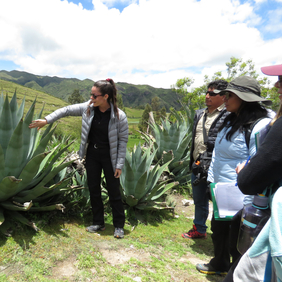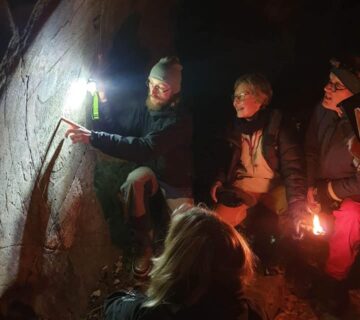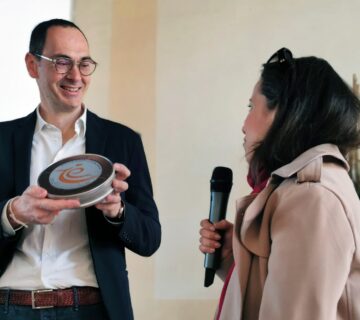Developing interpretation (Image: March Sarlat)
Designing a travel experience for the interpretation of natural and cultural heritage seems complex at first sight. However, for 18 lucky participants, the start of February brought the first IE Certified Interpretive Guide (CIG) course to be held in the highlands of Cusco, Peru. This provided a chance to understand and actively learn how to apply this powerful communication tool. The course was organised by Chaskiventura and it was delivered by Evarist March Sarlat, who is a Director at Naturalwalks and also an IE trainer.
The participants came from the Coast, Andes and Amazon in Peru and have different professions: tour guides at natural and cultural sites, teachers from universities, designers of tourism products and experts in territorial planning. All of them found heritage interpretation techniques useful for the development and improvement of their individual professions. The tourist companies that promoted the participation of their tour guides in this course were: Chaski ventura, Rainforest Expeditions, Explorandes and Desert Expeditions – all important Peruvian tour companies specialising in nature tourism, ecotourism, adventure tourism and thematic tourism.
For the whole group, it was challenging finding new ways to reveal the hidden value of cultural and natural heritage, because it seems easier and more important (more traditional) to engage our audience with just the historical and academic information. Thus, during the six-day course, the group improved their interpretive guiding skills and techniques and observed the application of heritage interpretation in the development of new travel experiences.
But how can we explain and apply interpretation in a clear and simple way?… Interpretation seeks to connect the interest of visitors through the revelation of the ‘secrets’ found in natural and cultural resources. It means that the interpreter creates ‘bridges’ between the territory and its resources with visitors. So it is possible to create significant experiences that raise the quality of tourist guiding and customer satisfaction.
Applying these techniques in a talk or in a guided route is complex at the beginning, but then it becomes a very enriching practice between interpreters and visitors. In this way, we could generate a deep connection to learn and change our attitudes and move forward to sustainable tourism.
This was also expressed by some participants during the course: “Interpretation can help to connect nature and culture and think differently on a tourist route that usually divides both aspects and tends to be more informative than interpretative…”. They also stated that, “this course has helped us to look at things with different eyes, enriching and valuing our profession and the power of what we transmit to our visitors and customers…”.
Finally, the message that this group takes is that in Peru you can take important steps and unveil the connections between natural and cultural resources, moving emotions that awaken us as interpreters, hosts and visitors. Perhaps, this is one of the keys to make tourism a true promoter of sustainability and development of our territory, revaluing and conserving what is hidden from the naked eye and that we cannot let it get lost without first ‘recognising it’.
Daysy Angeles is a professional in tourism planning and tourist product development, working as a representative for Latin America in Naturalwalks (www.naturalwalks.com). You can get in touch with her at: latam@naturalwalks.com or at dangelesbarrantes@gmail.com.
To cite this article:
Angeles, Daysy (2020) ‘The magic of the Andes revealed in interpretation‘. In Interpret Europe Newsletter 1-2020, 7-8.
Available online:
www.interpret-europe.net/fileadmin/Documents/publications/Newsletters/ie-newsletter_2020-1_spring.pdf




